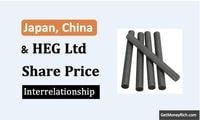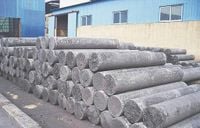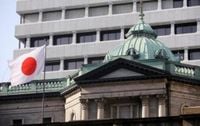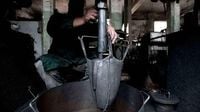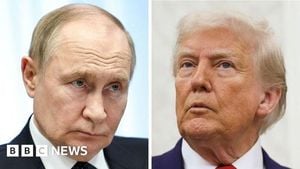Shares of HEG Ltd. and Graphite India Ltd. have seen a significant surge, with prices rising as much as 18% on March 25, 2025, following Japan's decision to impose a provisional 95.2% anti-dumping duty on graphite electrode exports from China, effective March 29, 2025. The announcement, made public by Japan's cabinet, came in response to a government probe that determined China was exporting graphite electrodes, a critical component in electric arc furnace steelmaking, at unfair prices, harming Japanese businesses.
HEG Ltd., a player in the graphite electrode manufacturing sector based in Noida and part of the LNJ Bhilwara Group, has become the world's largest single-site producer of graphite electrodes, operating at a facility in Mandideep, Madhya Pradesh, with an annual production capacity of 100,000 tonnes. Over 70% of HEG's production is exported to over 30 countries. The company’s robust market position enables it to capitalize on the sudden market gap created by the new duties.
The Japanese graphite electrode market is substantial, roughly worth between USD 600 million and USD 900 million, with annual demand around 60,000 tonnes. Prior to the announcement, China supplied about 15,000 tonnes, equating to 25% of Japan’s market. With the duties in place, the cost of Chinese electrodes is expected to rise dramatically, from around USD 5,000–7,000 per tonne to between USD 10,000–14,000 after March 29. This will create a gap that HEG can potentially fill, as Japanese steelmakers turn to alternative suppliers.
HEG's recent price surge, which saw shares jump from around ₹438 to ₹504 on that trading day, is indicative of investors’ perceptions of the opportunity arising from the anti-dumping measures. The stock saw trading volumes increase tenfold during the day, revealing high investor interest. Furthermore, Graphite India, another key player in the sector, also saw its share price rise by nearly 12%, contributing to a combined market capitalization increase of approximately INR 900–1,000 crore for both companies, a significant gain reflecting the positive investor sentiment.
The spinal issue at hand is China's role in this scenario. The country, which is the world's largest producer of graphite electrodes, had recently implemented stricter export controls on graphite products starting in December 2023, calling it a matter of national security. These regulations, combined with the dumping practices, forced Japan into taking decisive action. The Japanese government's investigation, which began in April 2024, confirmed reports of unfair pricing from Chinese producers.
The importance of graphite electrodes cannot be understated. These rods, used in electric arc furnaces to melt scrap steel, are essential for producing molten steel at extremely high temperatures. Without them, steel production would effectively halt, keeping Japanese steelmakers dependent on reliable suppliers. As Japan’s market for graphite electrodes has been constrained due to the recent changes, HEG’s high-quality electrodes are poised to be in greater demand.
Moving forward, HEG estimates that it could seize about 3,000 to 4,500 tonnes from Japan's market—potentially worth an additional revenue injection of USD 30 to 54 million annually, depending on how much market share it captures. If the duty persists beyond its initial four-month implementation, revenue projections could further increase to USD 50 to 100 million.
Notably, while this situation presents an opportunity for HEG, the company is currently operating at 85–90% capacity. Thus, expanding operations to meet a growing demand will necessitate additional investment and possibly new facilities in the future. Industry competition is also expected to intensify, with companies like GrafTech (USA) and Showa Denko (Japan) likely to respond vigorously.
The broader implications for the Indian graphite industry are significant as well. With HEG and Graphite India combined controlling approximately 20–25% of the world’s non-Chinese graphite electrode capacity, this moment could usher in an era of increased orders and jobs, emphasizing domestic production. As the world grapples with various geopolitics affecting trade and commerce, reports indicate that as industries aim for decarbonization, the demand for graphite electrodes is expected to surge by an additional 200,000 tons by 2030 globally, excluding China.
In summary, Japan's move to combat unfair trade practices by imposing anti-dumping duties on Chinese graphite electrodes has created a favorable environment for Indian manufacturers like HEG. As the market dynamics shift, the Indian graphite electrode sector could emerge stronger, attracting more investment and bolstering capacities on a global scale. For now, the market seems filled with possibilities as investors watch to see how HEG can effectively capitalize on this unique opportunity.
